Fox-Red Labradors: Their origins and features
What is a FOX RED Labrador—its rise and fall in popularity over the years
Above Photo: Fox Red Labradors courtesy of The Field Magazine, UK
Of course I resisted the temptation to name this blog “50 shades of Yellow”—I believe that one is already taken! But I’d love to delve into the development of this part of our wonderful Labrador breed.
“The Kennel Club formally acknowledges only three colors: black, yellow and liver – which has mutated to chocolate and thereby boosted the appeal of the brown version considerably. Black, everyone agrees, is black; yellow, by contrast, embraces shades from the lightest ivory to the richest russet – described as ‘fox-red’ – and all points in between. But all are officially still yellow.” (The Field, UK)
There is no room for “charcoal, champagne, polar white, or silver” btw. LOL For further info on SILVER LABS click on this link. Therefore, if you buy an AKC registered pup you will have to choose “yellow, black, or chocolate” on the form.
When it comes to the definition of a fox-red labrador, it is not straightforward. It’s fair to say that it a darker, reddish, orangish, a uniformly coppery coat – with emphasis on the ‘uniform’, no dilution or fading at the edges. The coloring of the pigment may vary—but it should be as dark black as is called for for yellow in the AKC official standard for the Labrador Retriever.
As far as some history of when the breed was first developing yellow, “When the Earl of Home, the Earl of Malmesbury and the Duke of Buccleuch famously imported their dogs from Newfoundland in the 1830s, they were referred to as St John’s water dogs (which just happens to be due south of the province of LABRADOR) and they were black. Neither the yellow nor the liver versions were recorded until the end of the 19th century; it is thought that this was because their lordships preferred the black version.” (The Field, UK)
“Bamboozling ducks”
“David Hancock, author of Old Working Dogs and a shelf-ful of other useful dog books, describes the duck tolling retriever, which still hails from Yarmouth county in Nova Scotia and it is a very foxy-red dog indeed. It is part retriever – which specific type is uncertain, although there was once a Norfolk retriever that was largely tan – with some spaniel of indeterminate origin, but there were then and are now all shades of brown, from liver to orange. It is used to bamboozle ducks, in the same way that red ’coy dogs once did in the great commercial decoys of the marshes and fens here. It migrated to Canada with early settlers, presumably from Yarmouth here to Yarmouth there, which would put at least two varieties of fox-red genes in the vicinity of the St John’s dogs long before the Earls’ labradors made the return journey.
Perhaps it was felt among the aristocracy that any associations with the red dogs of the Fen Tigers and the market duckmen were best avoided? Regardless, red dogs are particularly handy for wildfowling, not just for their retrieving and duck-wrangling skills but because they don’t reflect the moonlight like a paler dog does and they don’t create a black outline as a black dog will. They just disappear into the dark, which is a useful feature when flighting geese under a full moon or stalking fowl in a punt before sunrise.
When I remarked on this discovery to a keeper friend, who has kept at least one dark yellow in his kennels for 20 years or more – he’s a stickler for precision and deems the fox-red soubriquet too faddish for his taste – he was unsurprised. “Oh yes, they don’t show up in a pigeon hide, either, when we’re decoying the drillings. They vanish in tall grass the second they stop moving and they are very useful when you are out and about in the dark.” (The Field, UK)
Despite this marked advantage, it was the black labrador that dominated the breed’s profile during the last quarter of the 20th century. But the yellow and chocolate were rising in popularity VERY fast!
Becoming VOGUE
By the turn of the millennium, the black labrador had progressed beyond being standard issue for the sporting household and had become a stereotype that was teetering on the brink of caricature. Flat hat, green wellies, plus fours with a black lab at foot and you were good to go. The last word in chic rustique. There were so many about that Guns were tying ribbons to them in order to take the right one home after a day’s shooting. The black Labrador still holds his incredible popularity, but in the 20th century, the yellows and chocolates became very vogue, especially here in the US
“Not that the rise of the fox-red labrador has been an overnight sensation, exactly.
Charlie Thorburn at Mordor Gundogs in Perthshire points to the success of Craighorn Bracken at the 2001 IGL Championship in Windsor Park as a date when the pushback began. Bracken was not red but contemporary reports characterised him as a ‘deep yellow’.” (The Field, UK)
I PERSONALLY ran into my first FOX RED in 1988 when I made my first visit to Sally Kelley of Kellygreen Labradors when she lived closer to me in Cranberry, PA. She maintained the nice black pigment and all the lovely expression and conformation of the yellows and blacks in her kennel, and it gave me that EARLY photo in my head of what they were supposed to look like, and will never forget it. Sally did a great deal to advance the fox red Labrador.
MIXED???
So what is the Lab “crossed with??? (many ask!) Well, there is a bit of Newfoundland, St. Johns Dog and many others that were instrumental in creating the Labrador. For a full description, click here!
The earliest known photo of a Yellow Lab is Ben of Hyde, the first recognized Yellow Labrador Retriever (pictured below).
“Having established that they are indeed a true labrador, the next question is, “Do they work?” To which the answer is, “Of course they do.” They’re labradors after all. They live to work. And their achievements in trials and tests attest to that. There hasn’t yet been a fox-red superstar that has flattened the competition, snaffled the silverware and routinely rescued small children from ponds while dousing fires and putting the kettle on, but legends do not emerge overnight. It is a work in progress.” (The Field, UK)
The AKC describes it sums it up beautifully when they tell us, ”
The Labrador Retriever is the traditional waterdog of Newfoundland, long employed as a duck retriever and fisherman’s mate. The breed began its steady climb to supreme popularity in the early 1800s, when Labs were spotted by English nobles visiting Canada. These sporting earls and lords returned to England with fine specimens of “Labrador dogs.” (Exactly how these dogs of Newfoundland became associated with Labrador is unclear, but the name stuck.) During the latter half of the 19th century, British breeders refined and standardized the breed.
The physical and temperamental breed traits, so familiar today to millions of devotees around the world, recall the Lab’s original purpose. A short, dense, weather-resistant coat was preferred because during a Canadian winter longhaired retrievers would be encrusted with ice when coming out of the water. In its ancestral homeland, a Lab would be assigned to a fishing boat to retrieve the fish that came off the trawl. Accordingly, in addition to having natural instincts as a retriever, the dog required a coat suited to the icy waters of the North Atlantic.”
Of course, as many know who own yellows, the one “plus” is that their expressions are so much more noticeable with the light color, and the contrast of the black eye and pigment. It’s a lovely sight.
*Copywritten 2021 by Donna Stanley. Use only by permission, both text and photos.


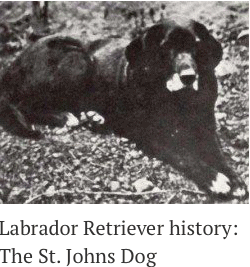
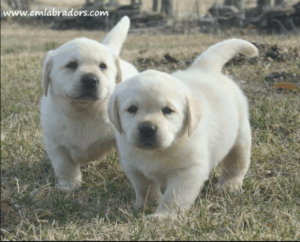

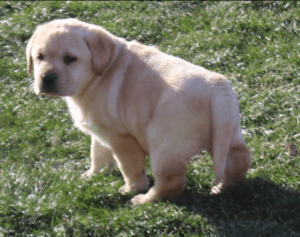
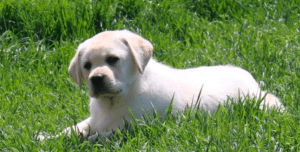
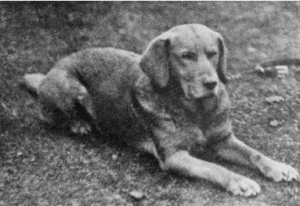


44 Comments